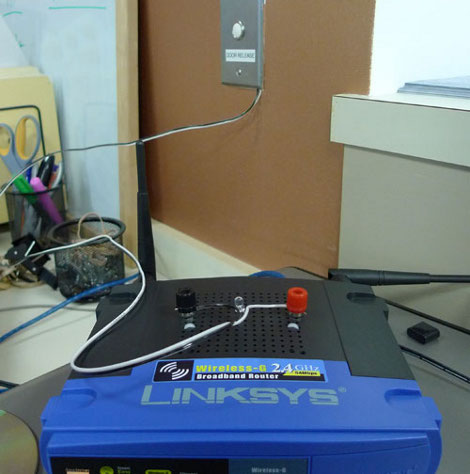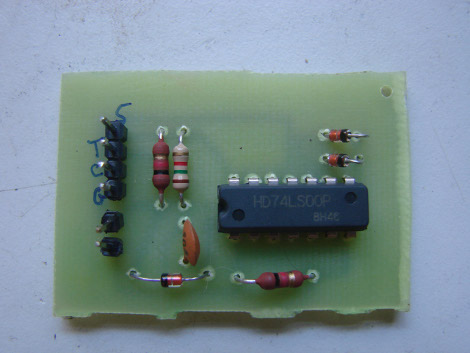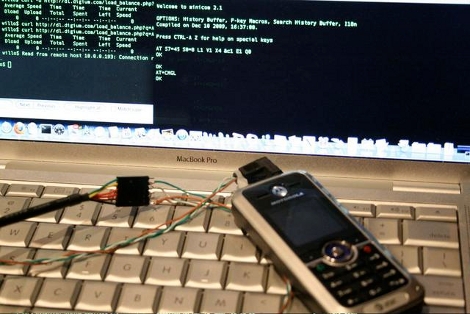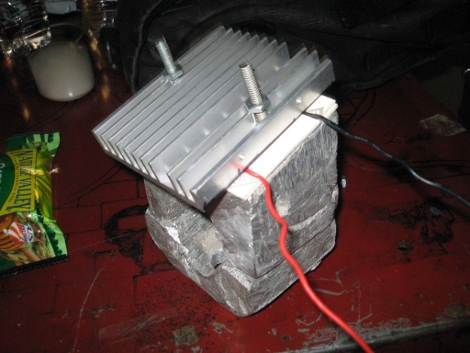
[Tom Lee] and his colleagues just moved to a new office. The doors are setup like a security checkpoint with electronic strikes and buttons on the inside to allow entry. The button simply completes a low-voltage circuit, activating the strike which made it quite easy to patch into. They build an interface board with a small relay to complete that circuit. As we’ve seen before, Linksys routers have plenty of extra room in the case so there was no problem housing the new circuit in this tiny network device. Now [Nicko] and his friends can use a custom app to input an access code or to verify a device ID from a cell phone and gain entry. The door still has keyed locks in case of a power outage. In fact, the only change made to the system was the addition of two wires to the “door release” button as seen above. See the one-touch device ID authentication in the video after the break.
This hack is similar to the GSM door entry from last year. In this case, the phones are communicating with the door via web interface and not the GSM network.

















